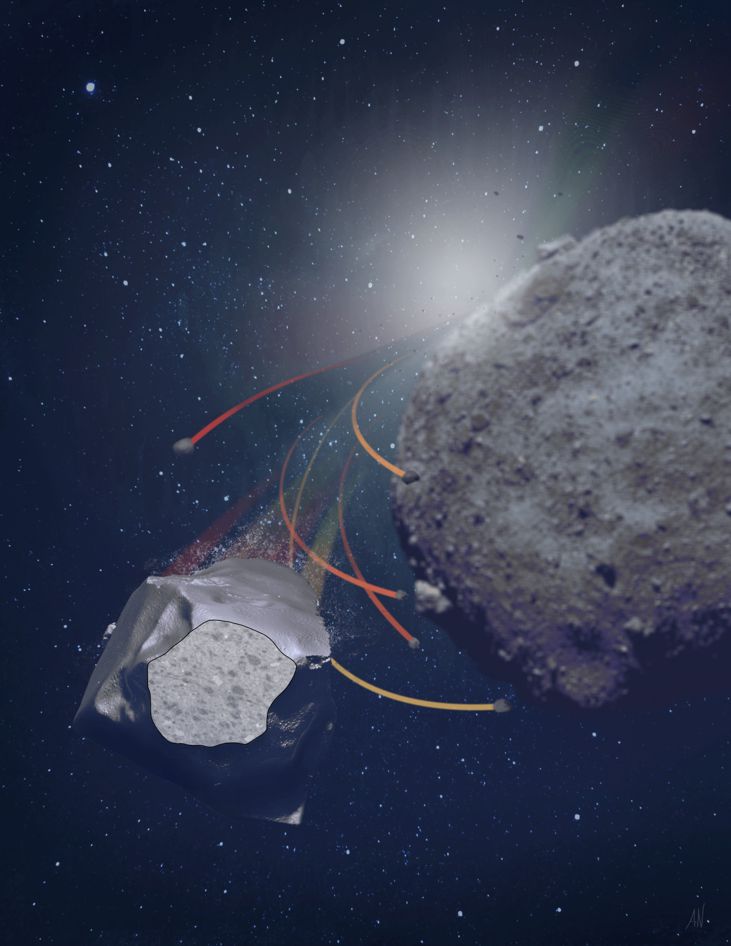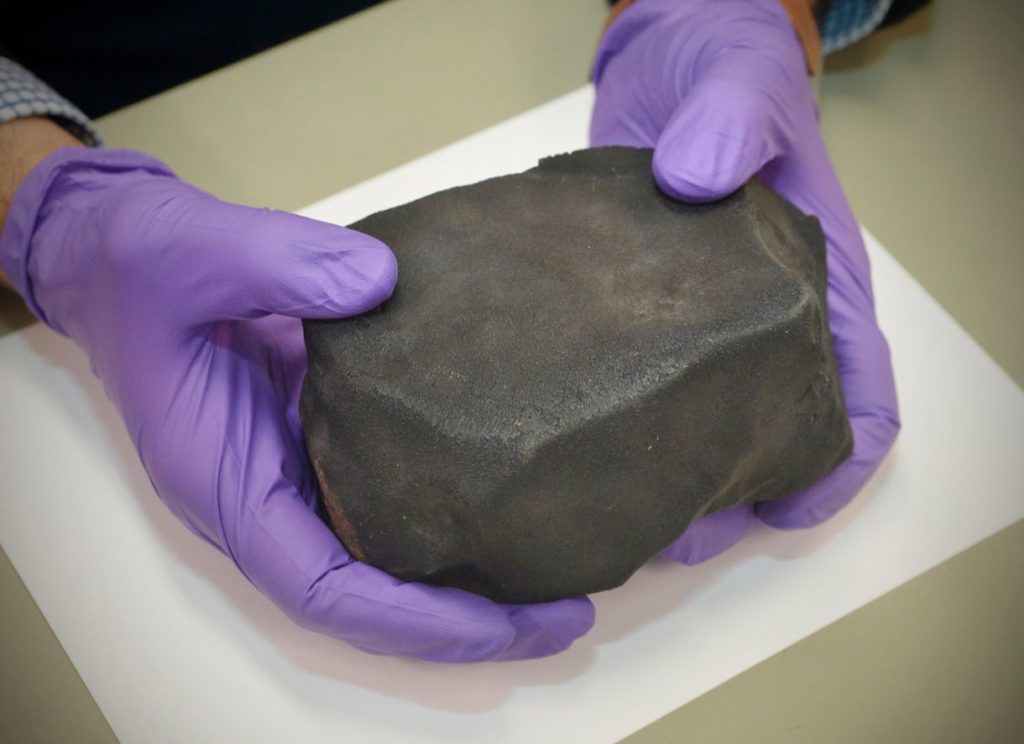In 2019, images from NASA’s OSIRIS-REx mission revealed a previously unseen geological phenomenon: pebbles were shooting off the surface of the asteroid Bennu.
It appeared as though the asteroid was spewing out swarms of marble-sized pebbles. It is unknown why this behavior occurs, as scientists have never observed it previously in an asteroid.
However, researchers present the first evidence of this process in a meteorite in a new report published in Nature Astronomy.
Philipp Heck, the Robert A. Pritzker Curator of Meteoritics at Chicago’s Field Museum and senior author of the Nature Astronomy study, says, “it’s fascinating to see a record of the same geological process in the museum’s meteorite collection that was just discovered by a space mission on an asteroid millions of miles from Earth.”

Rock fragments called meteorites can be broken off from asteroids, moons, or planets, but they most frequently come from space and fall to Earth. The Aguas Zarcas meteorite is named after the town in Costa Rica where it fell in 2019. Terry and Gail Boudreaux gave it to the Field Museum. The meteorite was being prepared for additional analysis when Heck and his student Xin Yang spotted something odd.
Yang, a PhD student at the Field Museum and the University of Chicago and the paper’s first author, explains that they were attempting to isolate incredibly minute minerals from the meteorite by breaking it up by freezing it with liquid nitrogen and thawing it with warm water.

“That works for most meteorites, but this one was kind of weird– we found some compact fragments that wouldn’t break apart.”
Heck claims that discovering meteorite fragments that are resistant to deterioration is not unheard of, but scientists often give a shrug and get out the mortar and pestle.
Heck claims that discovering meteorite fragments that are resistant to deterioration is not unheard of, but scientists often give a shrug and get out the mortar and pestle.
Instead, the scientists came up with a strategy to understand what these stones were and why they were so difficult to disintegrate.
“We did CT scans to see how the pebbles compared to the other rocks making up the meteorite,” adds Heck. “What was striking is that these components were all squished– normally, they’d be spherical– and they all had the same orientation. They were all deformed in the same direction, by one process.” Something had happened to the pebbles that didn’t happen to the rest of the rock around them.
“This was exciting, we were very curious about what it meant,” says Yang.
The 2019 OSIRIS-REx results did provide the scientists with a hint, though. They developed a theory from there, which they then backed using physical models. The asteroid was involved in a high-velocity collision, which distorted the region of impact. Since the side of the asteroid that faces the sun is more than 300 degrees Fahrenheit hotter than the side that faces away, the distorted rock finally split apart as a result of the asteroid’s rotation.
“This constant thermal cycling makes the rock brittle, and it breaks apart into gravel,” says Heck.
The asteroid’s surface then ejects these pebbles.The pebbles may be ejected by smaller impacts or other space collisions, or they may simply be released by the heat stress the asteroid experiences, according to Heck. But once the pebbles are disturbed, Heck says, “you don’t need much to eject something— the escape velocity is very low.” Bennu’s surface is loosely bonded and acts like popcorn in a bucket, according to a recent study.

The pebbles then went into a very slow orbit around the asteroid. Eventually, they fell back down to the asteroid’s surface, but this time it wasn’t deformed. The loose mixed pebbles on the surface of the asteroid then allegedly endured another collision, turning them into solid rock, according to Heck and Yang. Heck explains, “It basically packed everything together, and this loose gravel became a cohesive rock.” The new rock may have been displaced by the same impact, sending it hurtling into space. That fragment eventually became the Aguas Zarcas meteorite, which carried traces of the pebble mixing.
This may account for the Aguas Zarcas pebbles, making the meteorite the first tangible proof of the geological process discovered by OSIRIS-REx on Bennu. According to Yang, “It provides a new way of explaining the way that minerals on the surfaces of asteroids get mixed.”
That’s significant, adds Heck, because for a long time scientists have thought that the major way the minerals on the surfaces of asteroids get changed is through large, infrequent crashes. Heck explains that because particle ejection events are significantly more common than high-velocity impacts, they probably have a greater impact on understanding the composition of asteroids and meteorites.
Although Aguas Zarcas is the first meteorite to exhibit this behavior, others have undoubtedly done so as well. “We would expect this in other meteorites,” says Heck. “People just haven’t looked for it yet.”
Image Credit: April I. Neander. Asteroid image: NASA/Goddard/University of Arizona.
You were reading: Meteorite Gives Evidence Of Asteroids “Spitting Out” Pebbles: A Strange Phenomenon Seen Only Once
